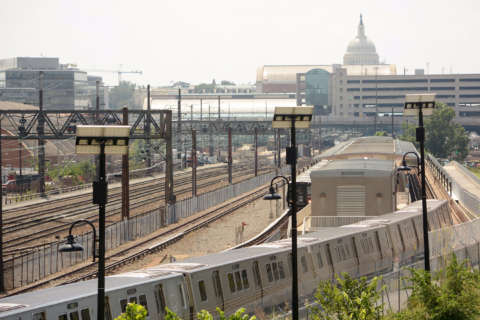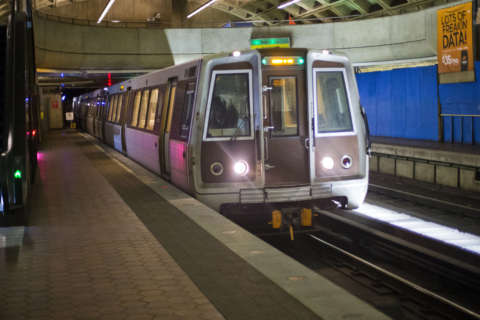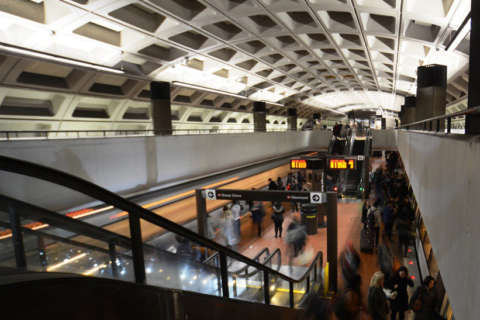WASHINGTON — Even as Metro has scaled back 24/7 work zones, problems remain in areas where riders experienced weekslong shutdowns or single-tracking.
In a new update, the Federal Transit Administration said Metro had 42 open issues to address, tied to the 16 surges between early June 2016 and late June 2017, of the 239 inspectors have identified in the work zones. Surge 13, the March and April single-tracking on the Blue and Yellow lines in Virginia, has 11 outstanding issues, the most identified by federal inspectors for any single surge area.
The FTA is tracking 568 open remedial actions for Metro in all, mostly tied to power or track issues. Open remedial actions are specific issues the FTA has directed Metro to address that federal inspectors have not yet verified as completed.
In June and July, federal inspections of the round-the-clock work zones identified rail ties that were put in at uneven distances apart, clogged drains, third rail support brackets at risk of breaking because of how they were installed, and a supervisor who reluctantly put on a required hard hat when questioned by inspectors, only to take it off when the inspectors walked away.
While some previously identified issues had been fixed, and there was good work done in a number of areas, federal inspectors found some spots where bundles of wire blocked an emergency exit catwalk, drains remained blocked, extra rail was left in the wrong spot, or bolts were too tall. In the Red Line work zone June 21, a rail vehicle was left unattended during a break in work without safety chocks around the wheels to keep it in place.
“Throughout” the Surge 16 work area between Shady Grove and Twinbrook, support brackets for the third rail were installed too close to insulators, which put them at risk of breaking. Some other work was inconsistent, including on all of the new rail ties that were installed uneven distances apart.
Metro’s internal quality control team identified additional issues for crews to clean up beyond what the federal reports identified. For example, after Surge 14, the internal inspectors found 36 issues. All four of the high-priority items had been addressed when a surge closeout report was filed; eight of 12 medium-priority issues had been fixed, and eight of 20 low-priority items had been fixed.
A final budget report on the 16 surges and related work to clear drains and mud on part of the Red Line to be presented to Metro’s board of directors Thursday puts the final capital cost of the 13 months of projects at $162 million — $8 million more than the project’s management team told the FTA in May the final total was expected to be.
Other track issues
This is all on top of continued water leaks, mud issues, defective fasteners, missing bolts or broken insulators that Metro inspection crews or federal inspectors found need to be addressed in other parts of the system.
At switch points near Foggy Bottom and Pentagon City, federal inspectors found significant wear and tear that required a 15 mph speed limit and other issues. Near Waterfront, water was leaking into an electrical room directly onto crucial alternating current switchgear. Metro crews replaced that switchgear and sealed the leak.
On the Green Line June 20, a federal inspector noted loose fasteners that should have led to the track being taken out of service immediately for repairs under Metro’s long-guiding track maintenance manual, but a Metro contractor conducting the track inspection instead documented it as a still-significant but less-pressing problem and allowed trains to continue running on those tracks.
A number of train operators, but what seems to be fewer than before, are still speeding past workers or failing to follow safety procedures in other ways, such as failing to properly sound their horn while passing crews on active tracks. One train operator promised to use an air horn since the train’s electric horn was malfunctioning, but didn’t. Another who did not follow proper procedures refused to provide the train’s identification number to an FTA inspector.








